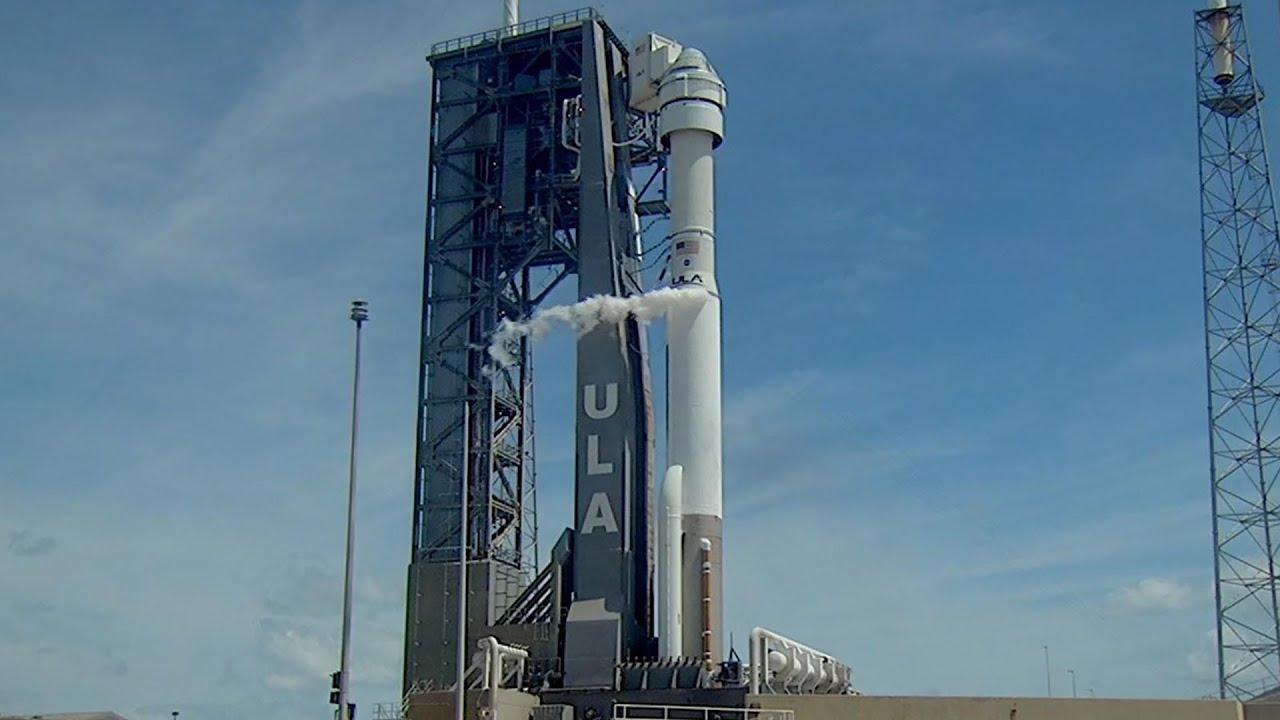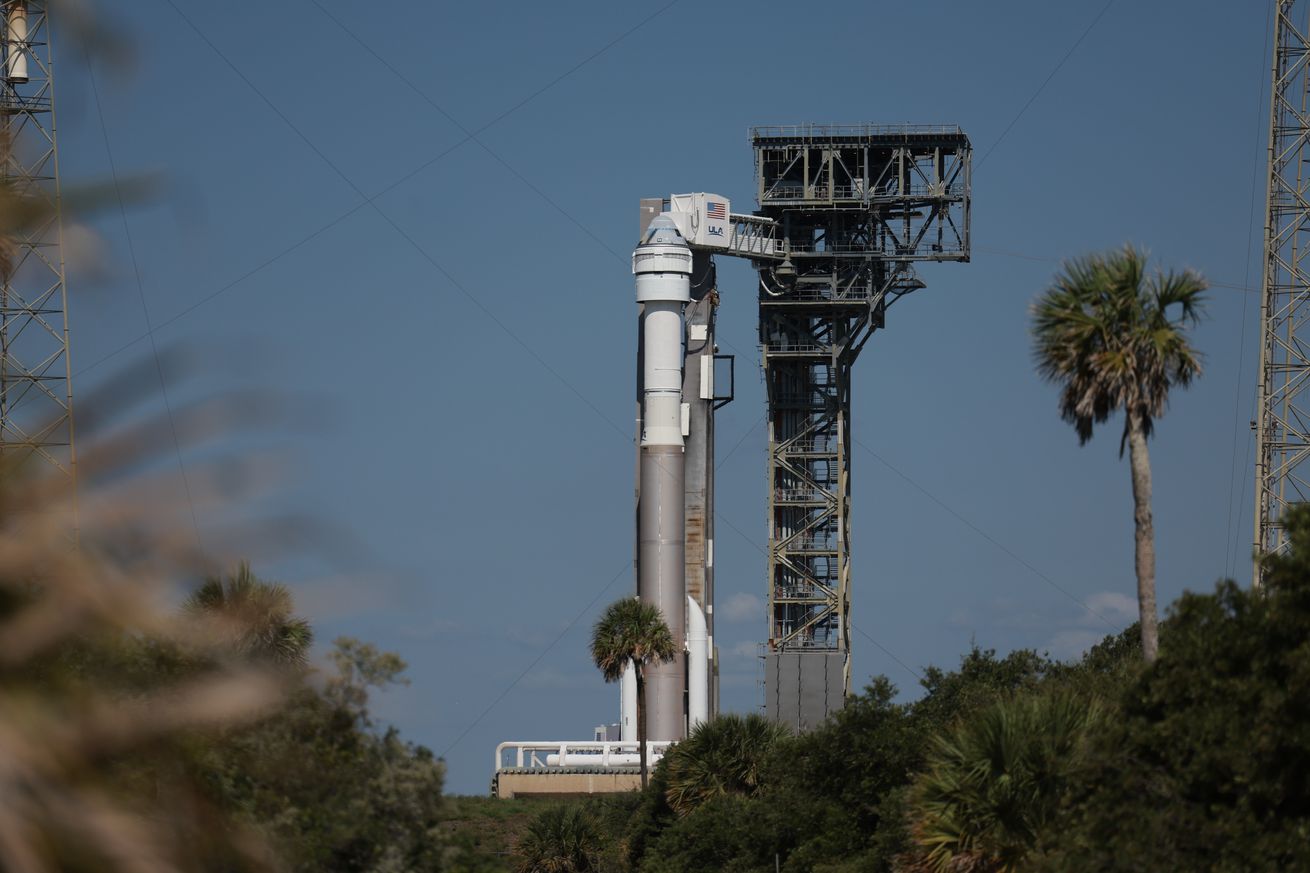Starliner Spacecraft Overview: Starliner Launch

Starliner launch – The Starliner spacecraft, developed by Boeing, is a reusable, human-rated spacecraft designed for low Earth orbit (LEO) missions. It is intended to transport crew and cargo to and from the International Space Station (ISS) and other LEO destinations.
The Starliner spacecraft features a unique design that combines elements of both the Apollo and Space Shuttle programs. It consists of a crew module, a service module, and a launch abort system. The crew module is designed to accommodate up to seven astronauts and is equipped with life support systems, controls, and displays. The service module provides power, propulsion, and communications for the spacecraft. The launch abort system is designed to separate the crew module from the launch vehicle in the event of an emergency.
Capabilities, Starliner launch
The Starliner spacecraft has a payload capacity of approximately 10,000 pounds and can accommodate up to seven astronauts. It is designed to dock with the ISS and remain docked for up to six months. The spacecraft is also equipped with a variety of sensors and cameras that allow it to perform autonomous docking and navigation.
Technological Advancements
The Starliner spacecraft incorporates a number of technological advancements that make it a more capable and efficient spacecraft than its predecessors. These advancements include:
- A reusable crew module that can be used for multiple missions.
- A launch abort system that is designed to protect the crew in the event of an emergency.
- A docking system that allows the spacecraft to dock with the ISS autonomously.
- A variety of sensors and cameras that allow the spacecraft to perform autonomous navigation.
Starliner Launch Preparations
Starliner’s launch preparations are a complex and meticulous process that involves a team of highly skilled engineers and technicians. The spacecraft undergoes rigorous assembly, testing, and fueling procedures to ensure a successful launch.
Assembly
The Starliner spacecraft is assembled at the Kennedy Space Center in Florida. The process begins with the integration of the spacecraft’s major components, including the crew module, service module, and launch abort system. Once assembled, the spacecraft is subjected to a series of tests to verify its structural integrity and functionality.
Testing
Prior to launch, the Starliner spacecraft undergoes a comprehensive testing program to ensure its readiness for flight. These tests include vibration tests to simulate the stresses of launch, thermal tests to verify the spacecraft’s ability to withstand extreme temperatures, and electrical tests to check the functionality of the spacecraft’s systems.
Fueling
The final step in the launch preparation process is the fueling of the Starliner spacecraft. The spacecraft’s propulsion systems are fueled with a mixture of liquid oxygen and liquid hydrogen. The fueling process is conducted under strict safety protocols to minimize the risk of accidents.
Safety Protocols and Quality Control
The safety of the Starliner launch is paramount. A team of safety engineers and quality control inspectors oversees every aspect of the launch preparation process. They implement rigorous safety protocols to ensure that all procedures are followed correctly and that the spacecraft is in optimal condition for launch.
Ground Crews and Mission Control
Ground crews and mission control play a critical role in ensuring a successful Starliner launch. The ground crews are responsible for assembling, testing, and fueling the spacecraft. Mission control monitors the spacecraft’s status throughout the launch process and provides guidance to the ground crews as needed.
Starliner Mission Timeline and Objectives

The Starliner mission timeline encompasses a series of meticulously planned stages, from its launch into Earth’s orbit to its docking with the International Space Station (ISS) and eventual return to Earth.
The mission’s scientific objectives are multifaceted, aiming to advance our understanding of space exploration and pave the way for future human spaceflight endeavors.
Launch and Ascent
The Starliner spacecraft will embark on its journey from Cape Canaveral, Florida, atop a United Launch Alliance Atlas V rocket. During the ascent phase, the rocket will propel the spacecraft through Earth’s atmosphere and into orbit.
Rendezvous and Docking
Once in orbit, the Starliner will utilize its autonomous navigation systems to rendezvous with the ISS. It will then carefully maneuver itself to dock with the station’s docking port.
Crew Transfer and ISS Operations
Upon docking, the Starliner crew will transfer to the ISS, where they will conduct a series of scientific experiments and research activities. These investigations will focus on areas such as human health, materials science, and Earth observation.
Return to Earth
After completing its mission on the ISS, the Starliner will detach from the station and begin its return to Earth. It will re-enter the atmosphere and land in the western United States.
Scientific Objectives and Research Goals
The Starliner mission will serve as a platform for a wide range of scientific investigations, including:
- Studying the effects of space travel on the human body, particularly the cardiovascular and musculoskeletal systems.
- Developing new materials and technologies for future space missions.
- Conducting Earth observation experiments to monitor climate change and other environmental phenomena.
- Testing new spacecraft systems and technologies for future human spaceflight missions.
Potential Impact on Space Exploration and Future Human Spaceflight
The Starliner mission is expected to make significant contributions to space exploration and future human spaceflight:
- Advance our knowledge of human physiology and the challenges of long-duration space travel.
- Demonstrate the capabilities of new spacecraft systems and technologies, paving the way for future missions to the Moon and Mars.
- Foster international collaboration in space exploration and set the stage for future joint missions.